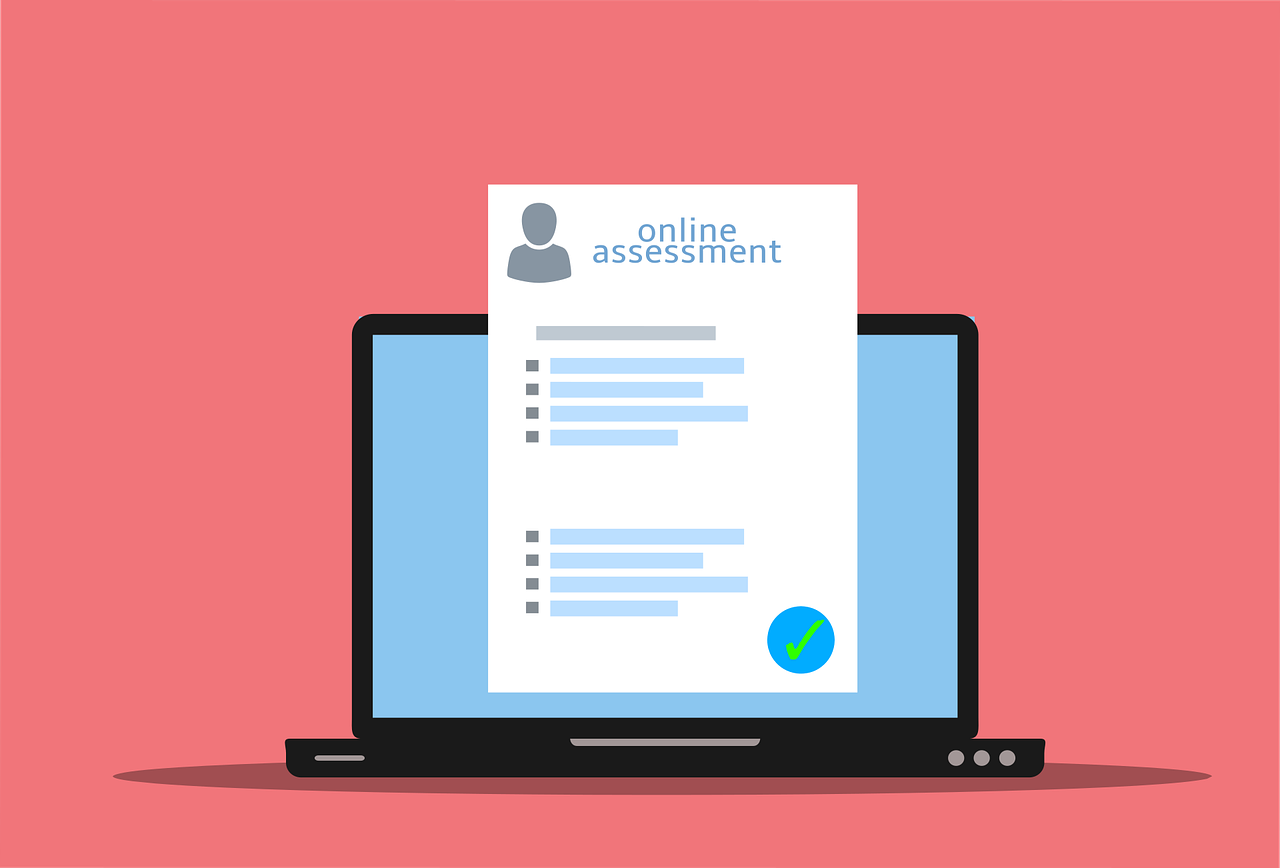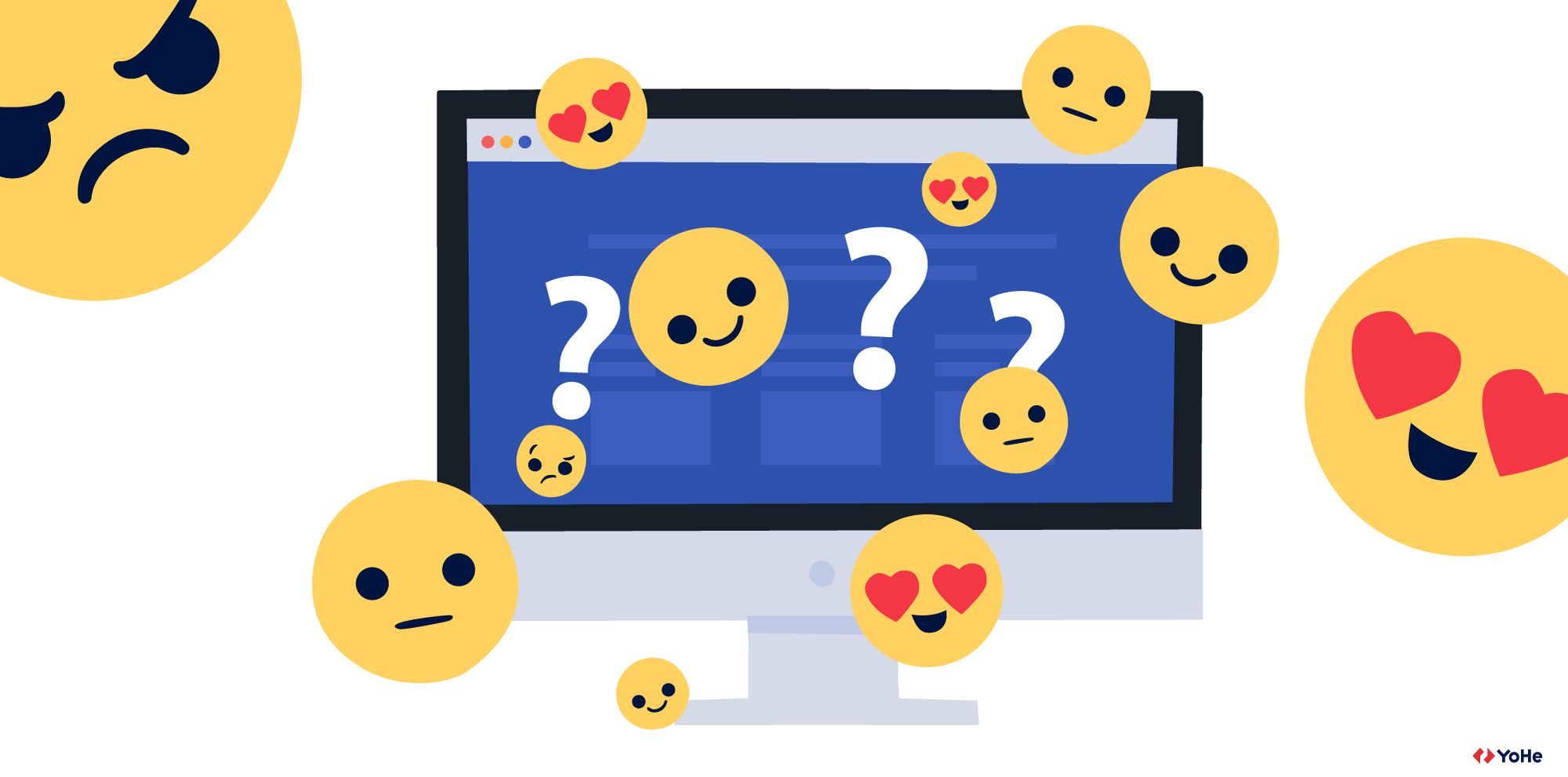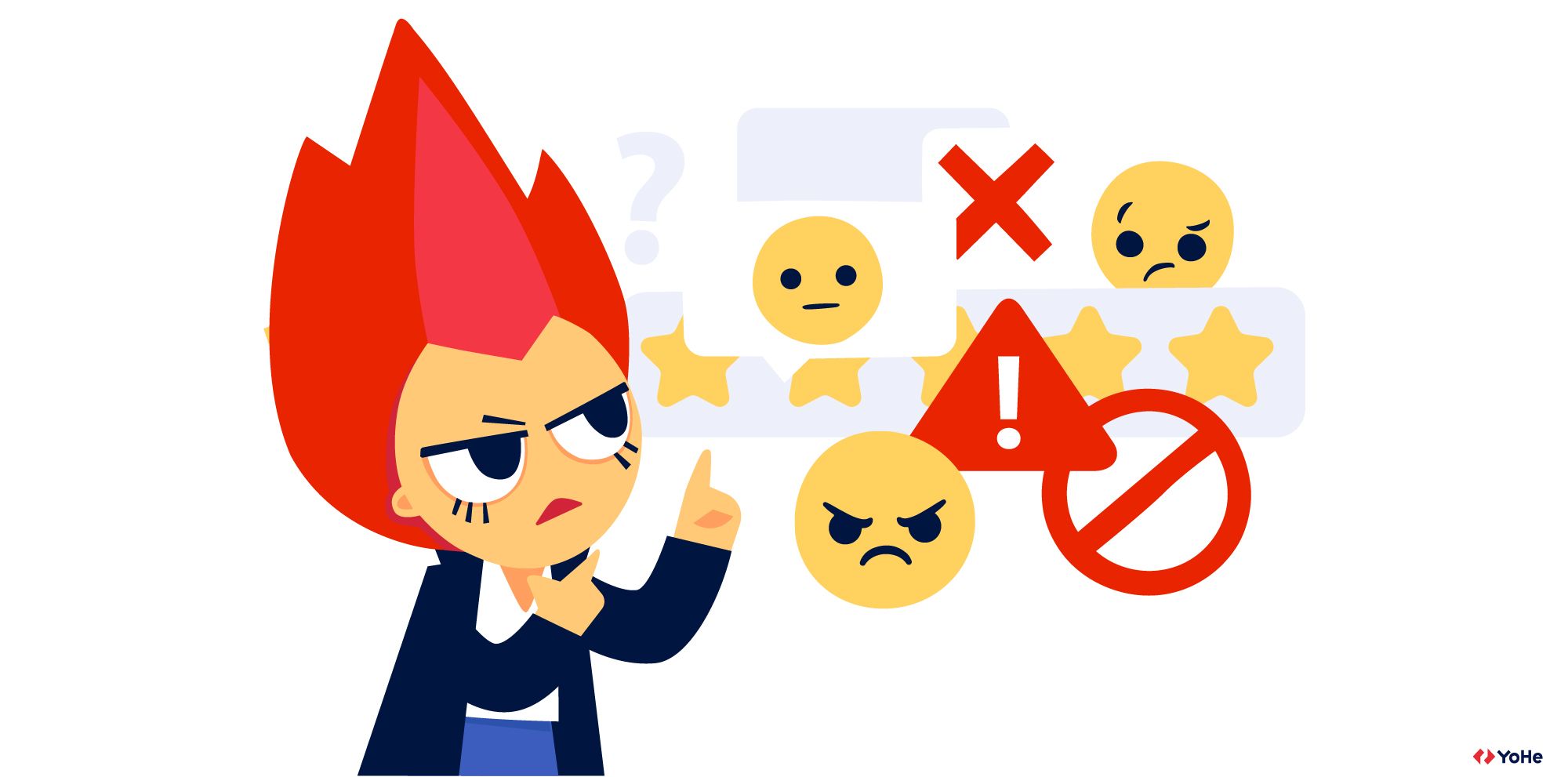The web analytics systems can lead to a deceptive feeling that you know everything about your customers and even a little more. But what do users really think? To understand this, you need to ask them the appropriate questions. How, which, and where on the site – we will tell you about it in the article.
No one knows your users better than they do. So why not ask them about problems or desired features? Regardless of the site you are working on – e-commerce, SaaS, blog, magazine – user surveys will give you the feedback you need to improve UX and increase conversion.
The main thing to remember is that the basis of high–quality feedback (yes, it is simple to collect it incorrectly) is the right questions at the right time. We have already told you what you need to ask users. In this article, we will go a little further. Let's look at more examples.
What are surveys, and how are they valuable?
To begin with, we note that we are talking about surveys on the website. This is a cool way to collect feedback about the user experience (UX) and thus improve it. Surveys on the site can be of absolutely any form and type, starting with small pop-ups in the corner of the page, and ending with a pop-up window for the entire screen width.
All of them help to collect high-quality information and answer the question: "Why?" Why do users behave this way and not otherwise? Why do they leave without completing the order? Why don't they scroll through the pages? Etc.
In which parts of the site to ask questions?
To get useful feedback, you need not only to formulate the questions correctly but also to ask them in the right places. For example, the login page is a great place to ask how the user got to the site. But not the best to ask about UX.
Before you start choosing questions (and we'll give you a whole library below), think about what goals you want to achieve with the help of feedback. And where on the site is the best places to start a dialogue with users:
- Which pages are vital for your business?
- Which are the most effective or inefficient pages that could benefit from insights?
- In which parts of the funnel do you notice a large outflow?
Answering these questions before you start working with feedback will help you get the most valuable insights you can immediately use.
So, here are the five most common places for surveys on the site:
1. Home page
Here you can find out the first impressions of users about your site. But such surveys should be used very carefully so as not to scare away some of the customers right away.
For example, if you sell software, run a survey: "Did we give you enough information about our product?". If you show it 30-60 seconds after a person lands on the site, you can collect insights for a more intelligible homepage redesign.
And if it's scary to bother users, there are other ways to collect feedback. For example, a passive feedback widget.
2. The site login page (landing page)
The landing page is the target entry point to your site. It can be the key to high conversion, so its content and clear structure need to be carefully monitored.
And that's where surveys will help you. The conversion or other metrics give a black-and-white view of the landing page. Feedback adds bright colors to this picture, and you understand what information users lack and what stops them from further traveling around the site.
It is better to show landing surveys only to those who have spent at least 30 seconds on the page or scrolled it to the middle. Because otherwise, you can scare away people who are here for the first time and do not know yet if they have enough information.
3. Success page or surveys after purchase
It's great to collect feedback here because the user has just completed a targeted action (for example, made a purchase or subscribed to a newsletter). At this stage, surveys will help you find out why you are preferred to competitors or whether there was something that almost prevented the user from buying.
Success page surveys can be shown immediately after a message about a successful purchase or registration is completed - the user path is still fresh in memory. And this is especially valuable for products or services.
4. Pages with a high percentage of exits
A high percentage of exits indicates that users cannot find what they want. By asking the right question on the problem pages, you will discover why people leave the site.
And if this metric is not so vital for your site, create a survey on pages with low conversion. The principle is the same: find a "weak" page and ask users why they are leaving or not buying.
5. Cancellations, tariff reductions, pages with a high churn rate
If you have a SaaS subscription service, there are probably users who want to unsubscribe or lower the tariff. Ask them a question immediately after the cancellation or downgrade and get crucial insights about what prompted them to make such a decision. In the future, this will help reduce the percentage of customer churn.
For such pages, create surveys as carefully as possible, so that users can safely leave negative feedback. Tell them how important it is for you to get a 100% objective rating from them to improve the service.

Questions to ask site users
Now that you've thought about which parts of the site to interview users in, it's time to start asking questions.
In our opinion, you will get the greatest benefit from open-ended questions. Those that the user will be able to answer in his own words in detail, and not just choose from several options.
We advise you to divide the problems you will be asking about into three groups:
- Drivers: what attracts users to your site?
- Barriers: what prevents some users from "converting"?
- Hooks: what catches other users and makes them "convert"?
Drivers: Ask the right questions on high traffic pages and landing pages
Barriers: Ask questions on the pages that are most often left
Start surveys on pages with a high percentage of exits. They will be shown to users who move the mouse off the screen – to the search bar, the close button of the browser, etc.
Hooks: Ask these questions when users have already completed the target action
This is just an approximate list of questions, the rest are born in experiments and direct work with feedback. But before creating your surveys, pay attention to the most frequent failings.
The most common mistakes when creating surveys
1. Too many questions inside
Don't ask more than 3-5 questions in one survey. In addition, do not mislead the user – show him how much he still has left until the end. Short surveys have much better pass rates, and most importantly, they are more objective. It is very difficult to sit for questions for 30 minutes and still answer the last of them honestly and engagingly.
2. Using only closed-ended questions
You've probably seen surveys-statements, for example: "When watching political programs, I feel bad." And immediately – a strip with answers from "Completely disagree" to "Completely agree" (Likert scale). This is an example of a closed-ended question – when the user selects an option from the previously suggested ones.
Such questions have their absolute advantages. For example, it's easier to understand which audience mainly uses the site, how often they make purchases, etc. In other words, closed-ended multiple-choice questions will help you calculate feedback and statistics.
But often, surveys in which users can write their answers themselves are much more effective. They provide insights into the user's language that we are hunting for. Therefore, do not overdo with closed-ended questions – it is better to open the survey with them, and then ask something open-ended depending on the answer.
For example, "How likely would you recommend
our site to friends or colleagues?" (NPS) –> "How could we improve the site... and your rating?" (score 0-8)/
"We are happy that you have made such an assessment.
What prompted you to do this the most?" (score 9-10).

3. Ambiguity in the question or possible answers
When composing questions, it is simple to make them ambiguous. It happens when the user may have more than one answer at once. Or when there is almost no difference between the answers.
In addition, the question should be only about one subject and only one – it is not necessary to squeeze several at once. "Do you drink coffee in the morning, and what do you think about instant drinks?" – divide them into two consecutive ones. And forget about ending the question in style: "... and why?"
And there are also trap words. It is sometimes impossible to understand what was meant in the question. For example, various variations of the pronoun You. "How much money do you spend on household appliances in a year?" And who are You? Me or my family? Another example of traps are words like "all," "what," "nobody," "everyone," "never," and "everyone."
And, of course, always check the accuracy of the wording. As, for example, in the case of: "What computer are you working on?" You can get a counter-question to it: "At home or in the office?" After all, even watching clips on Youtube is working on a computer.
Ambiguity is the hardest to deal with because we always strive to combine several concepts into one. And the deepening into details is frightening – subconsciously, we always want to get feedback of a more general nature. Even experts sometimes make such mistakes, and this is normal. Practice and develop self-focus, and then you will quickly be able to distinguish inconsistencies and ambiguities.
4. Questions about the distant future
"I don't even know what will happen to me tomorrow! And you're calling for a trip in six months," is the situation familiar? So users perceive questions about the distant future in almost the same way. Moreover, the answers to questions like: "Are you planning to purchase a car?" – will never be objective. Planning does not mean buying.
The same goes for questions about new features. You can't just ask the user what he wants. Everything is much more complicated, and you will have to work hard.
Usually, no one wants most of the new features. Many companies face ineffectively spent resources on the development of functionality, which then only does more harm.
Therefore (especially in offline research), there is a clear idea that asking users about their wants is more expensive for you. However, the situation is slightly different in online surveys. We noticed that if a product allows you to ask a question to a large audience and get at least 500 insights, you can always find intersections among user wishes.
If we study the sample in detail, it often turns out that 30-70% of respondents say the same thing. Perhaps in different words, with opposed solutions. But the main thing here is that their wants come from the same problems.
As a researcher or UX specialist, your task is to get to the bottom of this problem. Remember that most often, users talking about the future generate wants. You have to learn how to turn them into needs. It is the basis of the Voice of the Customer methodology. So, when asking about new features, analyze the answers deeper, and don't just run to put millions of tasks in the backlog for developers.
5. Language incomprehensible to respondents
Avoid slang and technical words whenever possible (well, only if you haven't explained them as clearly as possible). It will be much easier for new or still inexperienced users to get on the same page with you.
6. Partiality in the formulation of questions or the answers
Formulate questions and answers to get the most honest feedback, not just what you want to hear. An example of a biased question: "Don't you think that a separate page for registration would be more convenient?" There is already a tip to a certain opinion in the question itself. Hmm, yes, perhaps it would be more convenient! And if you consistently ask: "What do you dislike about the registration process?" And then, "Could a separate page resolve your dissatisfaction?" – you will not only receive ready-made A/B testing. But also learn, for example, which features can be transferred from the old registration page to the new one.
7. Following patterns and unwillingness to experiment
All tips in this article are general recommendations that will teach you how to create high–quality surveys. But blindly following it would be wrong. Working with feedback is a constant experiment. Compare the effectiveness of questions, produce new ones, and try different formats for collecting feedback. This way, you will get even more useful insights.
In general, surveys are a living tool. There are often situations when lots of users write their reviews, and we notice multiple coincidences. In this case, it is better to suspend the collection of feedback and start a new one by adding the most common responses.
8. Lack of testing questions
Before launching a question into action, test it on colleagues. This way you will find mistakes or incorrect wording and immediately make the survey more effective.
9. Using surveys when other software can handle the task better
Don't ask users questions that are easier to answer using other tools, for example, analytics. When you need to find out at which stages of the funnel the most leads fall off, do not point your finger at the sky, trying to find out with the help of feedback.
Using web analytics tools, build a funnel, find problem areas - and there you are already point–by-point interviewing users about the reasons for their departure. Try to build a synthesis of qualitative and quantitative data using feedback and other tools, and then you will reach the first cosmic speed very soon.

How to apply surveys correctly
Now that you have decided on a place for a survey on the site and formulated questions, you can launch your first campaign! The cases will help you better understand the application of all of the above:
1. Improving the usability of the site
Why is it important? Every time a person contacts the site, they also interact with your brand. The more convenient the site is, the happier the user is, which means that it is more likely that he will use the services or buy your product (and, most importantly, recommend you to friends).
How to do it: Use a widget on each page.
2. Redesign
Why is it important? We recommend making regular small improvements to the site design, but if you suddenly decide on a large-scale redesign, then you just can't do it without feedback.
How to do it: Usually, a redesign turns into a giant pain for loyal users. The new interface, as a rule, is designed according to the principle: "Let's do it this way, it's cool and convenient, they'll like it!" And as a result, people who are used to acting on the site according to a certain scenario from time to time are forced to retrain and break the system already folded in their heads. Of course, this causes nothing but negativity.
Therefore, in our opinion, any global changes on the site should be carried out with an eye on the existing user experience. Collect all possible feedback on the problems you are interested in, and find the main pain points and functional shortcomings. And only after that, thoughtfully sit down for a redesign.
3. Increase conversion on landing pages
Why is it important? Effective landing pages are the key to additional profits that can be reinvested in marketing and bring even more people to the site.
How to do it: Start a survey on the pages with the highest traffic and show it to people who scrolled through at least half of the page and spent at least 20 seconds on it.
What question to ask: "A small question: how can we improve this page?"
4. Home page improvement
Why is it important? Your homepage is usually the first user experience of interacting with your brand. And also a place where they understand what you do and what makes you special. By starting the survey here, you will get to know your customers better and find out what brings them to the top of your funnel.
How to do it: Set a survey on the home page with the appearance after 30 seconds.
5. Increased sales
Why is it important? The survey on the Success page is so valuable for e-commerce companies that this is the first thing we advise you to do if you are concerned about feedback. You will find out the needs of your customers and the reason why they chose you.
How to do it: Set the survey so that it is shown immediately after the purchase is completed.
What questions to ask:
"How would you rate the purchase process on our website?" (a scale of five emojis)
This question allows you to ask the next one.
Depending on the answer:
1. If a bad mark was chosen: "How can we improve the purchase process?"
2. If a happy emoji was chosen: "What did you like most during the purchase process?"
"Was there something that almost prevented you from making a purchase?"
6. Launching word of mouth
Why is it important? User recommendations are free to use, effective advertising. And the best way to understand whether they are ready to recommend you is NPS.
To calculate the NPS, ask with what probability users are willing to recommend you to friends, family, or colleagues (on a scale from 0 to 10). Then subtract the percentage of detractors (those who chose from 0 to 6) from the percentage of promoters (those who chose 9 or 10).
How to do it: Set a survey on the pages with the highest conversion.
What questions to ask: The standard NPS question is simple: "On a scale from 0 to 10, how likely would you recommend our company to friends or colleagues?"
To get the maximum benefit from the NPS, we recommend asking another question after it, for example: "What was the main reason for your mark?"
7. Creating user portraits
Why is it important? The so-called personas of the user are semi-fictional characters born based on information from web analytics or feedback. They collect data about who your users are, what they want, and what can stop them. Personas are incredibly useful for business growth and improvement. They help discover what different types of people are looking for on the site, what they buy, and how they use the product. So you can improve the user experience of real people.
How to do it: Set a survey on frequently visited pages, such as the home page, with the appearance after 30 seconds.
What questions to ask:
"Describe yourself in one sentence (for example, I am a 30-year-old marketer from New York who is interested in feedback)"
"What is the main purpose of your visit to the site?"
"What prevents you from making a purchase right now?"
8. Studying the competitive environment
Why is it important? You need to always be on the agenda of what is happening on competitors' websites, with products and prices. Otherwise, it will be difficult for you to compete with them. And you will be surprised when you find out which small and unknown competitors are preferred over you.
How to do it: Set a survey on the product page with the appearance after 30 seconds.
What questions to ask:
"Have you ever contacted companies that offer a similar product or service?" (No/Yes/Not yet, but I will look for it)
Depending on the answer:
1. If Not, ask: "Why not?"
2. If Yes, ask: "Which companies were they?"
3. If Not yet, ask: "Which companies are you still planning to contact?"

FAQ
Can surveys bother my users, worsen the UX, or lower the conversion rate?
Some of the biases we face: "I know my users," "They won't write anything sensible anyway," and "It can ruin the conversion." As our practice shows, all these arguments disappear as soon as a person reads reviews from their users.
The truth is that you can not avoid collecting feedback. If you don't know what users think about the site and why they behave this way and not otherwise, you will never design a worthy user experience.
If you are still concerned about the impact of a survey or widget on conversion, run them first on 10% of your users. And you can pause the tools when you get enough answers.
What should be the sample of responses?
As a rule, you need at least 100 answers to start working effectively.
But even ten answers can give you insights about what users need.
What is the average percentage of survey completion?
The completion varies greatly depending on the pages on which the survey is set, the number of questions, etc. Product pages or cart surveys may be completed more often than on the home page. Simply because users there are more interested and involved in the purchase process.
But don't get hung up on the percentage of survey completion. Better focus on getting at least 100 answers.
How do I get more answers?
The following tips can help you increase your survey completion rate:
- Start the survey with an informal "Hello!.."
- Indicate that the survey will be fast.
- If you ask one question, write about it: "One small question ..."
- If you ask several questions in a row, start with a closed-ended one, which will be answered Yes / No. And after that, ask the appropriate open-ended question.
- Focus on high-traffic pages.
Well, that's it – now you are ready to create surveys! And this is the first step to improving the user experience and increasing conversion.






